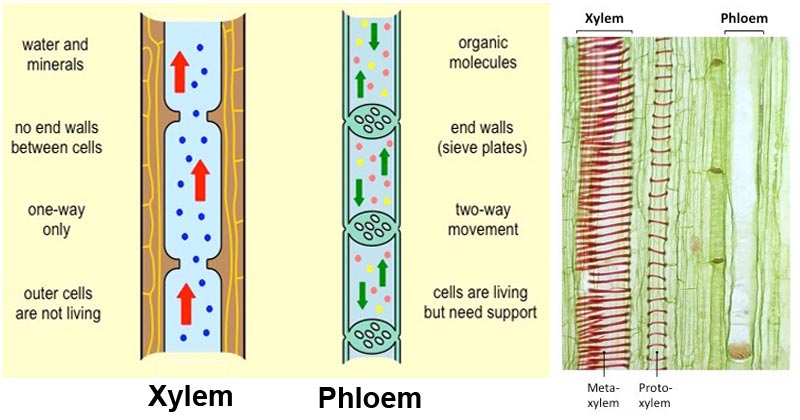| S.N | Xylem | Phloem | |
| 1. | Made up of dead cells except xylem parenchyma. | Made up of living cells except phloem fibres. | |
| 2. | Conducts water and minerals from roots to the leaves. | Conducts prepared foods from leaves to the different parts of the plant. | |
| 3. | Also called wood. | Also called bast. | |
| 4. | Composed of vessels, tracheids, parenchyma and fibers. | Composed of sieve tube, companion cell, parenchyma and fibers. | |
| 5. | Provides mechanical support. | Do not provide mechanical support. | |
| 6. | It is present in large amount. | It is present in less amount. | |
| 7. | Transportation is unidirectional. | Transportation is bidirectional. | |
| 8. | Most of the cells are thick walled. | Most of the cells are thin walled. | |
| 9. | Tylose is formed. | Tylose is not formed. | |
| 10. | Present inner to the vascular cambium. | Present outer to the vascular cambium. | |
| 11. | Xylem fibres are smaller. | Phloem fibres are usually larger. | |
| 12. | Tracheids and vessels are conducting cells. | Sieve elements are conducting cells. | |

Image source: thebiologynotes
References:
i) https://www.lidolearning.com/questions/bi-bb-selina8-ch1-exla-q9/q9-list-out-the-differences-be/
ii) https://pediaa.com/difference-between-xylem-and-phloem/

